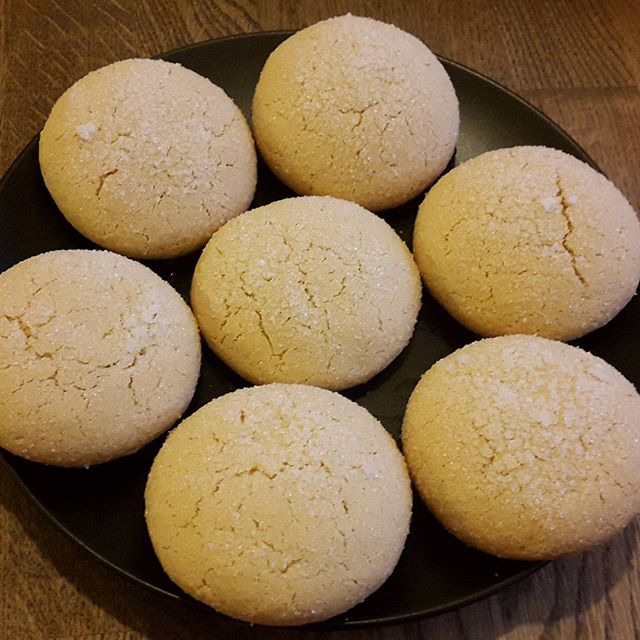INGREDIENTS
ROLLS:
- 3/4 cup buttermilk, warm (I pour the buttermilk in a glass liquid measuring cup and microwave for 1 minute on 50% power) (here is a guide for making your own buttermilk)
- 6 tablespoons butter, melted and cooled
- 3 large eggs
- 1/4 cup (1 3/4 ounces) sugar
- 1 tablespoon instant yeast
- 1 1/4 teaspoons salt
- 3 1/2 to 4 1/2 cups flour
FILLING:
- 1/2 cup (1 stick) butter, softened to room temperature
- 1 cup brown sugar
- 2 teaspoons cinnamon
GLAZE:
- 1 1/2 cups (6 ounces) confectioners sugar
- 2 ounces cream cheese, softened
- 3 tablespoons buttermilk or milk
- 1/2 teaspoon vanilla extract
INSTRUCTIONS
- For the dough, add the warmed buttermilk and butter to a stand mixer fitted with the dough hook (or you can use a large bowl and mix with a wooden spoon). With the mixer running, add the eggs, sugar, yeast, salt and 1 cup of the flour.
- Continue adding flour, just until the dough pulls away from the sides of the bowl. It should be very soft but not so sticky that it leaves a ton of residue on your fingers. Let it knead for just 1-2 minutes until it has come together in a soft, tacky ball.
- Place the dough in a large, lightly greased bowl and cover the top tightly with plastic wrap. Let the dough rise in a warm place until doubled, around 2 to 2 1/2 hours, depending on the warmth of your kitchen (you can speed up the rising by placing the covered bowl of dough in a very lightly warmed oven).
- Meanwhile, lightly grease a 9X13-inch baking dish (if doubling the recipe, I’ve found using a large rimmed baking sheet, 11X17-inches, works great).
- In a small bowl, mix the brown sugar and cinnamon together. Set aside.
- When the dough is ready, turn it out onto a lightly greased counter and press it into a 16 by 12-inch rectangle (if you have doubled the recipe, split the dough in half and roll out one half at a time). Gently spread the softened butter over the rectangle, using an offset spatula or rubber spatula or just your fingers.
- Sprinkle on the brown sugar mixture, leaving a 1/2-inch border along the top and bottom edges. Lightly use the palms of your hands to press the brown sugar mixture into the butter, adhering it to the dough.
- Lift the longest edge closest to you and begin rolling the dough into a tight log. Pinch the seam closed and roll the log so it is seam side down. Gently stretch the log to be 15- or so inches in length with an even diameter all the way throughout and pat the ends to even them up.
- Using a serrated knife, slice the log into 12 evenly sized rolls (or more if you like your rolls thinner). Arrange the rolls cut side down on the prepared baking pan and cover with lightly greased plastic wrap. Let the rolls rise in a warm place until doubled, 1 to 1 1/2 hours; it's really important to let them rise well or else they won't be light and fluffy after they've baked.
- Bake at 350 degrees for 22-25 minutes, until the rolls are very lightly golden on top and cooked through but not overly browned.
- While the rolls are baking, mix the softened cream cheese and buttermilk together until smooth (I usually use a blender to make this glaze). Add the vanilla and mix. Whisk in the confectioner’s sugar. Add additional milk or buttermilk one teaspoon at a time until desired glaze consistency is reached. It should be thick yet pourable. Drizzle the warm rolls with the glaze.
NOTES
Make-Ahead: to make these rolls ahead of time, once the rolls are formed and placed on the baking sheet, immediately cover them with lightly greased plastic wrap and refrigerate them; do not let them rise. Refrigerate overnight, up to 16 hours. Let the rolls sit at room temperature, covered, until they have doubled in size about 3-4 hours and then uncover and bake as directed. The rolls can also be frozen at the same point as mentioned above (cover with a layer of greased plastic wrap and a top layer of tin foil). They will need to sit at room temperature for 9-11 hours to defrost and rise before baking.
Milk: I've also found that warm 2% or whole milk works great in place of the buttermilk.
Flour Amount: as with all yeast doughs, I never use the flour amount called for in the recipe as a hard fast rule. Because humidity, temperature, altitude and a multitude of other factors can impact how much flour you need in your yeast doughs, I always judge when to quit adding flour by the texture and look and feel of the dough rather than how much flour I’ve added compared to the recipe. This tutorial on yeast may help identify how a perfectly floured dough should be.













0 Comments